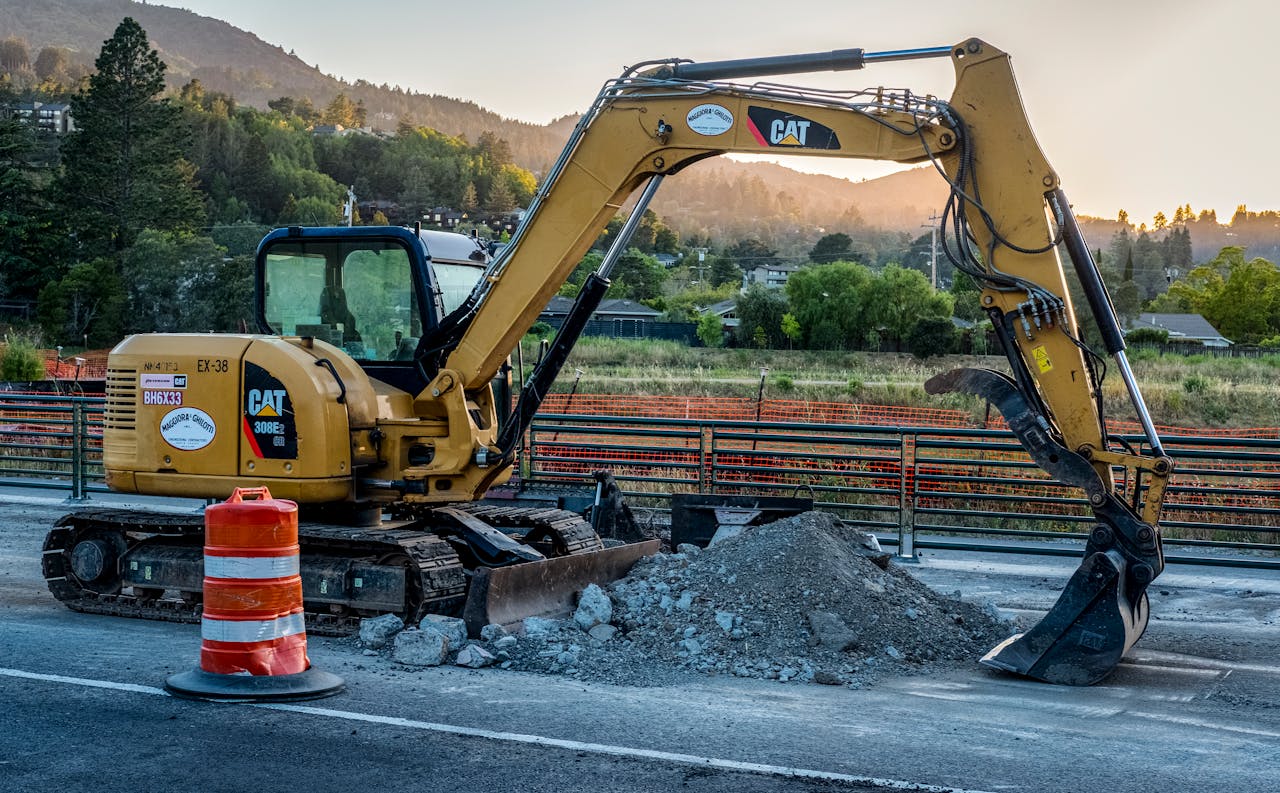Back to Listing
How to Properly Load a Skip to Maximise Space and Minimise Costs

When hiring a skip, you want to make sure you get the most out of your rental. Properly loading a skip allows you to maximise space and save money by avoiding extra charges for overfilling. Knowing how to arrange your waste can make a big difference, whether you're clearing out your home or renovating a space.
You might think that any loading technique will do, but there are key strategies that can help you use your skip more effectively. By organising your items in a specific way, you can create more room and ensure that your skip remains stable. Understanding these tips could help you avoid common pitfalls and make the entire process smoother.
As you prepare for your project, consider how you can make the most of your skip hire. With a bit of planning and the right techniques, you’ll keep costs down and make sure your skip is packed safely and efficiently.
Understanding Skip Hire Basics
Skip hire is an effective way to manage waste, especially during home renovations or clear-outs. Knowing the types of skips available and how to choose the right size for your needs can save you time and money.
Types of Skips Available
There are several types of skips you can hire, each designed for specific tasks. Common options include:
- Mini Skip: Ideal for small home projects or garden waste. It usually holds about 2-3 cubic yards of waste.
- Midi Skip: A good choice for larger clean-ups, accommodating up to 4-5 cubic yards.
- Builder’s Skip: This larger option can handle 6-8 cubic yards and is suitable for construction waste.
- Maxi Skip: Best for major projects, it can hold 10-16 cubic yards.
Choosing the right skip type can prevent the need for multiple hires, ensuring you maximise efficiency and cost-effectiveness during your project.
Choosing the Right Skip Size
Selecting the correct skip size is crucial for effective waste disposal. You should assess the volume of waste you expect.
A mini skip is great for small household clear-outs. If you're tackling a more extensive renovation, a builder's skip might be necessary. Remember, hiring a skip that is too small could mean extra costs for additional pickups.
To determine the right size, consider these points:
- Volume of Waste: Estimate how much waste you'll generate.
- Type of Waste: Certain skips are better for specific materials.
Taking the time to choose wisely will ensure your skip hire is efficient and economical.
Preparation Before Loading
Before you start loading your skip, it’s important to prepare properly. This step ensures you maximise space and handle waste efficiently. Focus on assessing the waste type, sorting and separating items, and identifying any hazardous materials.
Assessing the Waste Type
Begin by examining the waste you plan to dispose of. Different types of waste require different handling and disposal methods.
Types of Waste:
- General waste: Includes everyday items like non-recyclables and food waste.
- Recyclables: Items like paper, plastics, and metals can be recycled; separate these for proper disposal.
- Bulky items: Large furniture or appliances may need special care, as they can take up significant space.
Understanding these categories helps you decide how to load your skip and avoid extra costs from incorrect disposal.
Sorting and Separating Items
Once you identify the waste type, sort and separate your items. This step is key to making the most of your skip space.
Tips for Sorting:
- Flat items: Flatten boxes and take apart furniture. This allows for better stacking and fills gaps effectively.
- Group similar materials: Keep recyclables together. This will make it easier for waste management services to process your rubbish.
- Bulky items first: Load large items at the bottom to provide a stable base, filling in smaller pieces around them.
Taking the time to sort your waste saves you money by preventing the need for additional skips.
Identifying Hazardous Waste
Be aware of hazardous materials before loading your skip. These require special handling and cannot go in skips.
Common Hazardous Waste Includes:
- Batteries
- Paints and solvents
- Asbestos
- Electrical items
Check local regulations for specific requirements on hazardous materials. Proper identification helps you avoid fines and ensures safety during disposal. Always consult your skip hire provider if you're unsure about what is classified as hazardous.
Loading Strategies for Efficiency
To make the most of your skip hire, it’s important to adopt effective loading strategies. Paying attention to how you load your skip can maximise space and keep costs down. Here are key methods for achieving this.
Maximising Skip Space
When loading a skip, you want to use every inch available. Start by sorting your waste into categories like heavy, bulky, and light items. By doing this, you can plan your loading order better.
Place larger items at the bottom. This helps create a stable base. Then, fit smaller pieces around them, ensuring you fill gaps. This method prevents waste from shifting during transport.
You can also consider using ramps for heavier items. They help you load without straining your back and keep everything balanced. Lastly, it’s wise to take a moment to assess your waste. You may find better ways to arrange it for optimal use of your skip space.
Weight Distribution Techniques
Distributing weight evenly in your skip is crucial for safety and efficiency. Begin by placing the heaviest items, such as bricks or rubble, at the bottom. This helps create stability and reduces the risk of spillage during transport.
As you fill the skip, try to keep the weight balanced. Spread out heavy items across different sides, avoiding a top-heavy load. This helps prevent the skip from tipping during transport.
Consider using the “triangle method,” placing heavier items in a triangular pattern. This method maximises stability and allows you to load items more efficiently. Always ensure the skip is filled up to the maximum fill line without exceeding it. Paying attention to weight distribution can save you from potential hazards and extra costs.
Handling Large and Bulky Items
When loading a skip, handling large and bulky items correctly is essential for maximising space. Start by breaking down these items when possible. For example, dismantle furniture and flatten boxes. This method creates more room in your skip.
To load bulky items efficiently, follow these steps:
- Fill the Base: Place larger, heavier items like appliances or bricks at the bottom. This creates a stable foundation.
- Layer Strategically: After the base is filled, layer lighter items on top. This helps maintain balance.
- Fill Gaps: Use smaller items to fill any gaps between larger pieces. Soft items like bags of rubbish can fit nicely in these spaces.
Remember, the goal is to pack your skip tightly. Avoid leaving too much airspace.
Make sure to place heavy items evenly. This prevents your skip from becoming top-heavy, which could cause spills when moved.
Additionally, always check the skip hire guidelines concerning weight limits. Filling your skip with bulky items can quickly lead to overloading.
Following these tips will ensure you maximise your skip space while also saving money on additional trips or fees. For more detailed advice on loading your skip, visit The Best Way to Fill a Skip.
Dealing with Flat and Light Items
When loading a skip, it's important to start with flat items. These items provide a stable base for heavier loads.
Consider these flat items:
- Doors
- Tabletops
- Sheet wood
- Large panels
Place these items at the bottom of the skip first. This helps to distribute weight evenly and prevents the skip from becoming top-heavy.
Next, think about your light items. These can fill in gaps and minimise airspace. By doing this, you maximise the skip's space and save money on disposal costs.
Tips for handling light items:
- Break down large objects: Items like tables should be dismantled. Remove legs to pack them flat.
- Stack light items efficiently: Use vertical space by stacking boxes or containers.
Make sure to load these items last, on top of heavier materials. This way, they are protected and not damaged during transport.
By following these steps, you ensure a safe and efficient load in your skip. The key is to plan and organise your materials wisely to make the most of the space.
Garden Waste Considerations
When loading a skip, you should consider how to handle garden waste effectively. This type of waste often includes branches, leaves, grass cuttings, and other debris from your outdoor space.
Preparation is key. Before loading, organise your garden waste into manageable piles. This makes it easier to sort and load into the skip efficiently.
Here are some tips for loading garden waste:
- Load the bulky items first: Start with larger branches and garden furniture if you're clearing out space.
- Pack tightly: Fill in gaps with smaller items like leaves and grass cuttings. This reduces air pockets and maximises space.
- Avoid mixing waste types: Keep garden waste separate from other waste. This helps when it comes time for disposal.
Remember that some skips may have restrictions on what can be included. Check your skip hire company's guidelines. This can prevent extra fees or complications during collection.
If you're doing a full garden clearance, consider hiring a larger skip. It can save you money in the long run by reducing the number of trips needed.
Taking these steps will help you load your skip efficiently, ensuring that you make the most of the space while properly disposing of your garden waste.
Tips for Home Renovation Debris
When working on home renovation or construction projects, proper skip loading is essential. Here are some tips to help you manage loose debris effectively.
-
Sort Your Debris
Before loading, separate materials like wood, metal, and plastics. This makes it easier to stack items efficiently. -
Break Items Down
Larger items can consume valuable space. Break down boxes or dismantle furniture to fit more in the skip. -
Layer Your Load
Place heavier items at the bottom and lighter ones on top. This helps maintain stability and maximises space. -
Fill Gaps
Use smaller pieces of debris to fill any gaps. This prevents empty spaces and allows you to utilise the skip's full capacity. -
Avoid Overloading
Keep an eye on the fill level. An overloaded skip can lead to extra charges and safety hazards. Always follow the skip hire guidelines.
Remember that loading your skip properly will save you time and money. Efficient use of space helps reduce trips to the waste facility and keeps your project on schedule. Follow these tips to make the most of your skip.
Avoiding Overloading Issues
When loading a skip, it's vital to avoid overloading it to prevent safety risks and extra costs. An overloaded skip can lead to problems during transport and legal issues.
To keep your skip within the weight limit:
- Know the sizes: Choose a skip that suits your waste volume. If unsure, opt for a slightly larger skip. This helps avoid needing extra skips later.
- Estimate your waste: Plan ahead by estimating how much waste you'll have. Creating a waste management plan can help you stay organised.
It's also important to load the skip correctly:
- Fill in gaps: Use smaller items to fill any gaps. This maximises space and prevents wasted room.
- Even weight distribution: Distribute heavy items evenly throughout the skip. This maintains stability during transport.
Be aware of the max fill line marked on the skip. Ensure all items are below this line to avoid any penalties or dangerous situations.
Finally, consider securing your load with ropes or straps. This prevents items from spilling during transit and keeps the skip safe for others around you. By following these tips, you can ensure your skip is loaded properly while managing waste effectively.
Safety Measures and Legal Requirements
When loading a skip, being aware of safety measures and legal requirements is crucial. This ensures you comply with regulations and prevent accidents during the disposal process.
Understanding Skip Hire Regulations
Skip hire regulations vary by location, but certain rules are common. First, confirm your skip hire company is licensed and compliant with local waste disposal laws. This helps avoid fines and ensures safe handling of waste.
Check if your skip must stay on your property or if it needs a permit for street placement. For public roads, obtaining a permit from the local council may be necessary.
Be aware of restrictions on hazardous materials. Items like batteries, asbestos, and toxic chemicals typically cannot be placed in skips. Violation of these regulations can lead to legal repercussions and safety issues.
Safe Loading Practices
Loading a skip correctly maximises space and prevents accidents. Start by placing heavier items at the bottom to create a stable base. This helps distribute weight evenly, reducing the risk of the skip tipping during transport.
Utilise the available space by breaking down large items, like furniture or boxes. Fill gaps with smaller waste, ensuring the skip is filled to the maximum fill line without overloading it.
Keep hazardous materials out of your skip. Items like paints, oils, and electronic waste require special handling and should not be mixed with general waste.
Lastly, ensure that the skip is securely covered if left unattended. This can prevent spillage and keep the area safe for pedestrians and vehicles.
Waste Management After Loading
After you have loaded your skip, managing waste effectively becomes crucial. Proper disposal not only helps the environment but can also save you money.
Firstly, ensure your skip is collected promptly. Contact your chosen skip hire company to schedule a pickup. Timely collection prevents overflow and additional costs.
Next, understand the waste types you have loaded. Many skip hire companies separate waste for recycling. Knowing what can be recycled helps minimise landfill use. Common categories include:
- General Waste: Non-recyclable materials.
- Green Waste: Garden waste like branches and leaves.
- Building Materials: Bricks, tiles, and concrete.
Ensure you follow any guidelines provided by your skip hire company. For instance, some may not accept hazardous materials like paints or batteries. Ignoring these rules can lead to extra charges.
After collection, follow up with your skip hire company for any documentation. You might need a waste transfer note, proving proper disposal. This is especially important for larger projects.
Lastly, consider the impact of your waste management choices. Opting for a company that prioritises recycling can support sustainable practices. This approach not only benefits the planet but can also enhance your reputation in the community.
Effective waste management after loading your skip ensures a cleaner environment and potentially lower costs. Make informed choices and stay engaged with your skip hire provider.
Cost-Saving Tips for Skip Hire
Hiring a skip can be a smart way to manage waste. To save money, follow these practical tips.
1. Choose the Right Skip Size
Select a skip that fits your needs. If you hire a skip that is too big, you may pay for unused space. Mini skips are perfect for small projects, while larger skips are better for extensive clear-outs.
2. Plan Your Load
Before loading, plan how you will arrange items. Packing your skip efficiently helps fit in more waste. Consider filling gaps and layering items like a puzzle.
3. Maximise Your Load
Heavy items should go at the bottom. This prevents the skip from tipping and allows lighter items to be placed on top. Avoid overfilling, as this can result in extra charges.
4. Compare Skip Hire Prices
Look around and compare prices from different companies. Some may offer better deals or discounts. Ensure you know what is included in the price.
5. Consider Short-Term Hire
If you only have a small amount of waste, consider a mini skip for a shorter time. This option often costs less and is easier to manage.
By following these tips, you can make the most of your skip hire, minimise waste, and keep costs down.








